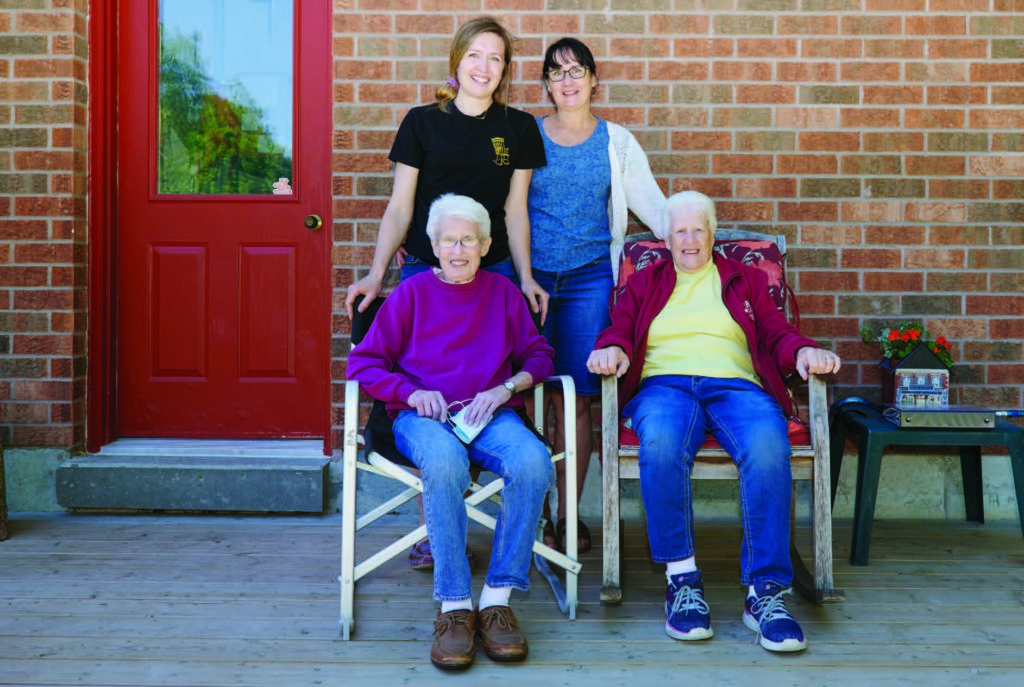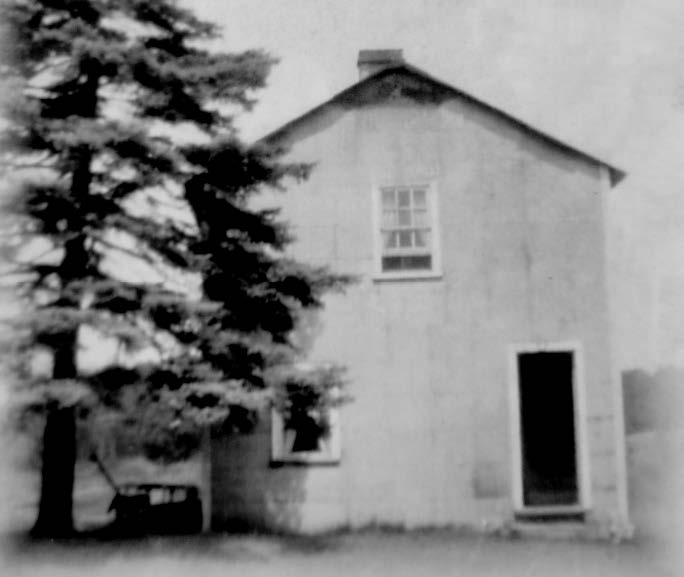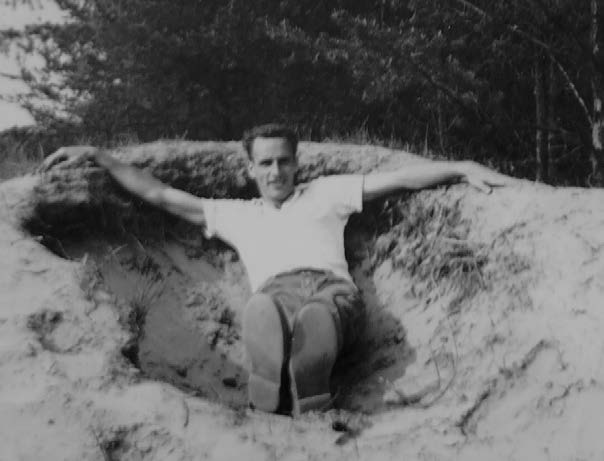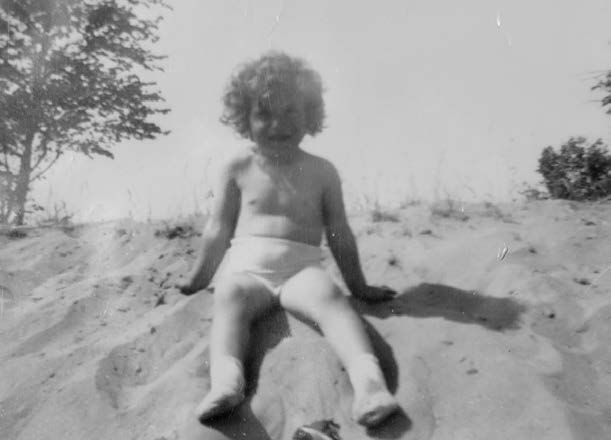The open fields had become blow sand deserts, drifting sands had blocked roads, the split rail fences were soon buried, and on dry windy days, the Whitchurch sky was yellow from blowing sand. Drinking water began to dry up and the number of birds, deer, fish, and other animals dwindled. With the topsoil gone, there was not enough available nutrients in the soil to support even grass.
In hilly areas, the light soils were readily removed by water flow, the ground being gouged into ever-deepening gullies. Sand-filled flash flood waters became common for everyone downstream in the spring, while the same patch became a parched, waterless bake oven in the summer sun… Whitchurch had become a wasteland…
In the nineteenth century, the Whitchurch landscape was subjected to heavy timbering to clear the land for cultivation. Large volumes of Ontario’s softwood forest were shipped to Britain and the United States as square timber. Hardwoods were typically burned in piles to make potash. With the forest cleared, farming could commence. Most farming activity was supported only for a few decades; the land had given out by the 1890s. Large areas of wasteland were created in the light sandy soils of Whitchurch Township and elsewhere in southern Ontario. The mistake: to farm the Oak Ridges Moraine.
The solution would be to reforest the land. York County launched a program in 1922 to purchase lands for reforestation. A little more than 60 years after the first purchase, the public forests across York Region (York County became York Region in 1971) totaled 4,900 acres. These forests form an important component of our Greenbelt ecosystem.
I met Laura McCullough, who had been raised in Cedar Valley. In fact, her family had been living or visiting here for five generations. She is of Gen 4. I became intrigued and asked to meet her family. On a cool June 15 morning, I met representatives of four generations on the old homestead property along Vivian Rd. Lots of family names have been melted into a greater clan, but “Andrew” and “Watt” would be heritage names of record.
My great, great uncle John Andrew bought the property in 1926 (Gen 1). He lived in Toronto at the time and worked repairing commercial laundry equipment alongside his father and brother. There wasn’t much work, and so he decided to try his hand at farming. He had chickens and a couple of horses. John would eventually purchase trees, pine and spruce, from the Township at an extremely low price, planting them all over the property. With the help of his younger brother Pete, they would begin to fill in the five large sand holes over the 15 acres of land.
Sand was a big part of life for the first two generations. It wasn’t quite a desert when they bought it, but it became so shortly after. They ‘developed’ their own sand golf course, dug holes for play, and more often than not, returned home as black as dirt, as Whitchurch sand isn’t clean like beach sand. Of course, there was no running water to clean up with. The kids would walk over to Scout Pond (now in Scout Tract York Region Forest) for a swim, but the plentiful leeches would be a menace. Sometimes they’d walk over to Seldom Seen community to catch Suckers from under rocks in the stream (a former hamlet where McCowan Rd. has a break in it, near the Eldred King “dog pond”).
Eventually, because the soil was so sandy, John discovered that the land was not great for farming. He would return to the city for work, but always seeking retreat on the property when he was able. His siblings (Matt, Jean, Peter, Jenny) and parents would also come up on weekends, treating it as a weekend getaway, arriving often by train right in Cedar Valley. John’s sister, Jenny (my great grandmother), would eventually meet my great grandfather, George, at one of the local Pine Orchard ball games. George lived on McCowan in a farmhouse where he was raised. His father ran a store in Toronto and left his wife and six children there to farm and survive throughout the week, living off the land with very little.
George Watt and Jenny Andrew would eventually marry. They had their wedding reception on the family property in Cedar Valley. The house was full of family and friends celebrating, and in the morning when they awoke, all of the guests were snowed in; at that time the Vivian Road was merely a dirt track. They celebrated with music by the light of lanterns.
George and Jenny settled in Newmarket. All of the family from Toronto and those in Newmarket would then return on weekends for Sunday dinner. Jean, their sister, would make a roast beef dinner every Sunday over a large cook stove in the original house. Jenny always brought the pies. They would sit outside under the large tree right next to the house, sharing stories and playing cards, and also golfing amongst the blow sand.
George and Jenny had four kids – Barb (my grandma), Helen, Betty and Peter (Gen 2). As children, they would return to Cedar Valley on weekends – playing with their cousins, running the sandy soil until dark. They too would all settle in Newmarket with families of their own. For some time, Jenny and George would host dinners in Newmarket on Saturdays. The Toronto family would join them for dinner and then continue onto Cedar Valley for the rest of the weekend, and of course, Sunday dinner.
Grandma Barb and Grandfather Larry had three children. Patti, Laurie and Terri – Gen 3 (Terri is Laura’s mom). They too would bring their kids out to Cedar Valley for weekends – playing baseball and horseshoes while the kids ran alongside their cousins.
Aunt Helen purchased the property from John, around 1976. At this time, the house was renovated from its more original “cottage-like” design. Jean and John continued to come up from Toronto on weekends until they passed.
Helen thought it would be nice for her parents to spend their last years on the land that brought them together. At that time, she had the original property split into three – building two new homes on either side of the original house in 1988 and 1989. Weekends continued as a time to gather, and Sunday dinners again returned to Cedar Valley, this time Jenny taking on the responsibility.
Jenny and George lived on the East side of the property, Helen in the house on the West of the property, and Laurie (Barb’s daughter, Laura’s aunt) moved into the original house. When Jenny and George passed away, Helen then moved into their house, and Terri and Steve (Laura’s parents) would move into Helen’s now vacant house with their five kids.
Another generation would run the sand of Cedar Valley, although now much more forested, they had trails for walking, skiing and cycling. The trails run through the forest, each with their own name, connecting all three properties. Laura and her siblings, Hana, Jeni, Liesel, and Stephen (Gen 4) would spend hours outdoors. It was the best upbringing, recounts Laura.
Laurie (Laura’s aunt) developed cancer, shortly after Terri and Steve moved in. To rally around her, Terri began hosting Sunday dinners again. Aunts, uncles, grandparents, cousins, gathered for a buffet on Sunday. Even Terri’s in-laws would join in, some even moving to a nearby property in Cedar Valley to be closer to the action. The dinners never stopped after that. Laurie beat cancer and now runs the Terry Fox run in Newmarket every year.
Sunday dinners were a time to connect all generations and a time to connect past to present. Grandma Barb would continue to share stories of the early days of Cedar Valley. Helen would pipe in and add her version of the same experience. It was truly a treasured time.
COVID stopped Sunday dinners, and it has been extremely hard for everyone, but especially hard for the older generations. They lived for Sunday. It gave them a reason to get through the week – to see the younger generations in the same place where they spent the fond days of their youth. We all await the day when we can return to Sunday gatherings in Cedar Valley – five generations later.
On the day I visited them, Laura’s kids (Gen 5) took off to play in the forest. The land stirs childlike imagination as much now as it did back then, through the sands of time.



